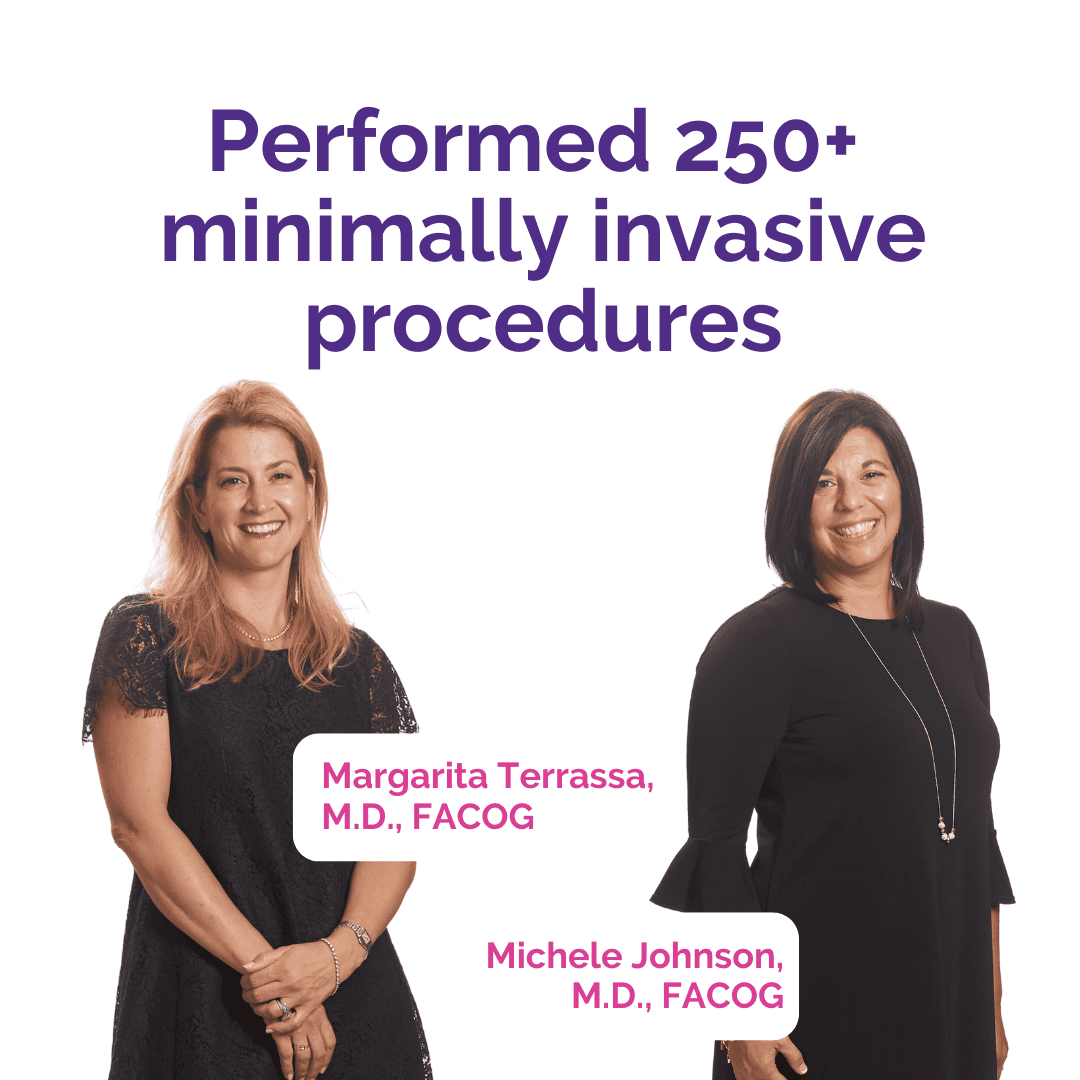Did you know that hysterectomies are the second most frequently performed surgical procedure for women in the United States? Choosing a hysterectomy is a unique decision as there are many factors to consider, especially when protecting your body, wellness, and overall health.
Approximately 600,000 hysterectomies are performed annually in the U.S. alone. Why do women undergo these procedures? Uterine fibroids, bleeding problems, and cancer are at the top of the list. At Women First of Louisville, we want to help you understand your options and what to expect from this procedure.


What to Expect When Getting a Hysterectomy
A hysterectomy is a surgical procedure that involves the removal of the uterus, most of the time the cervix.
All of the physicians here at Women First perform minimally invasive hysterectomies whenever possible. We perform almost all hysterectomies vaginally, laparoscopically, or robotically. Sometimes, an open abdominal hysterectomy is necessary.
Margarita Terrassa, M.D., FACOG, and Michelle Johnson, M.D., FACOG, board-certified OB/GYN physicians at Women First, have performed over 250 robot-assisted hysterectomies each. Dr. Johnson highlights the benefits of this minimally invasive approach and clears up misconceptions.
Undergoing a hysterectomy can be a significant event in a person’s life, entailing physical and emotional adjustments. Patients typically experience a recovery period that varies depending on the type of surgery performed—ranging from minimally invasive procedures to more traditional, open surgeries.
Post-operative care typically involves pain management and a gradual return to daily activities.
Why Get a Hysterectomy?
The need for a hysterectomy usually arises from conditions such as bleeding problems, uterine fibroids, endometriosis, chronic pelvic pain, uterine prolapse, or cancer.
Uterine fibroids are the most common reason for hysterectomies, accounting for approximately 40% of all procedures. Endometriosis and uterine prolapse also contribute significantly to the number of surgeries performed.
However, hysterectomies are also performed to treat certain types of cancer as well. Robotic techniques make it easy to perform minimally invasive hysterectomies when needed. Taylor Hodge Aiken, M.D., an OB/GYN at Women First, published research on using Robotic Radical Hysterectomy for Early Stage Cervical Cancer.
Decision-making involves consultations with healthcare providers, where diagnostic tests like ultrasounds and endometrial biopsies may be utilized to determine the underlying condition. At Women First, we offer many resources for women experiencing any of these conditions and considering a hysterectomy.
What is Recovery from a Hysterectomy Like?
Patients undergoing minimally invasive hysterectomy procedures have significantly shorter recovery times. Many return to light activities within a week, but it can take 2-4 weeks, compared to 6-8 weeks for traditional surgeries.
With a minimally invasive hysterectomy, Dr. Johnson was able to return to work and perform surgery within two weeks.
Hysterectomy and Menopause
A hysterectomy can lead to menopause if the ovaries are removed during the procedure, a process known as surgical menopause. This is because removing both ovaries at any age will cause menopause. The cessation of ovarian hormone production causes menopausal symptoms. Hysterectomy is the removal of the uterus and does not cause menopause. When the ovaries are left, menopause occurs naturally.
The Impact of Removing Ovaries
Hysterectomies do not involve the removal of ovaries unless necessary. The decision to remove or retain the ovaries during a hysterectomy depends on the patient’s age, underlying conditions, and risk factors for ovarian cancer. Removing the ovaries can significantly lower the risk of ovarian cancer but causes immediate menopause if not already menopausal.
Minimally Invasive Hysterectomy
Advancements in medical technology have made minimally invasive hysterectomies more common. These procedures, including vaginal, laparoscopic, and robotic surgery, offer benefits such as shorter hospital stays, less postoperative pain, and quicker recovery compared to an open hysterectomy.
Watch Dr. Johnson explain what to expect from a hysterectomy:
Da Vinci Robotic hysterectomies allow the surgeon to use a computer and laparoscopic tools to remove the uterus with minimal incisions and downtime. This technology allows easier surgery, especially with a large uterus or extensive scar tissue. Drs. Terrassa and Johnson were recently recognized for performing 300 and 250 da Vinci robotic procedures, respectively.
Sexual Activity After a Hysterectomy
Many women report unchanged or even improved sexual satisfaction after a hysterectomy. However, you will have to wait 4-6 weeks to resume sexual activity. A study found that 70% of women experienced no change or an improvement in sexual function after hysterectomy. The removal of pain-causing conditions was cited as a major factor for improved sexual satisfaction post-surgery.
Misconceptions About Hysterectomies
There are three main misconceptions about hysterectomies.
- Ovary removal: A common misconception is that hysterectomy involves removing the ovaries, but hysterectomy is only the removal of the uterus and cervix. The ovaries may or may not be removed during a hysterectomy.
- Menopause: Another misconception is that a hysterectomy will cause menopause. This is only the case if the ovaries are removed.
- Prolapse: There is concern about developing prolapse after hysterectomy. However, today’s minimally invasive approach has made this less of a problem.
It’s natural to have concerns about undergoing a hysterectomy. Discussing these concerns with your doctor at Women First can help you make an informed decision, weighing the benefits against potential risks and side effects.
In some cases, alternative treatments to hysterectomy may be explored, such as medications or less invasive surgical procedures. Early intervention and management of conditions like fibroids and endometriosis can sometimes prevent the need for a hysterectomy. The Endometriosis Foundation of America provides resources on managing endometriosis, a common condition leading to hysterectomy.
Frequently Asked Questions About Hysterectomies
What can you expect during and after a hysterectomy at Women First?
The procedure is usually done in a minimally invasive manner which is laparoscopic, robotic, or vaginal. Patients may be able to go home the same day, with minimal need for opiate pain medicine, and can return to work within a couple of weeks if their job doesn’t involve heavy lifting. Restrictions on sexual activity range from 2 weeks to 4-6 weeks, depending on whether the cervix was removed.
What are the options for hormone therapy (HT) after a hysterectomy?
After a hysterectomy, especially if the ovaries are removed, hormone therapy can help manage menopausal symptoms. With the uterus removed from a hysterectomy, there is no need for progesterone as part of hormone therapy. Only estrogen is needed.
How does a hysterectomy affect my risk of developing heart disease?
Hysterectomy does not affect heart disease risk. Women who have had their ovaries removed have an increased risk of developing heart disease compared to those who still have their ovaries. This is particularly true for women who undergo the procedure before the age of 50. Estrogen therapy can reduce this risk
When should a patient consider a hysterectomy?
Indications include bleeding problems, uterine fibroids, and pelvic pain. A hysterectomy may be the best treatment for any menstrual problem not controlled by conservative treatments like oral contraceptive pills, IUDs, or endometrial ablations. It’s also considered for pain that cannot be otherwise controlled.
Can a hysterectomy improve my quality of life?
Many women report improvements in their quality of life after a hysterectomy due to the relief from the symptoms of the conditions that required the surgery, such as pain and heavy bleeding. However, individual experiences vary, and it’s important to consider both the benefits and potential impacts of the surgery.
When to Consider a Hysterectomy
A hysterectomy can be a life-changing procedure for many women, addressing painful and sometimes life-threatening conditions. The best way forward is to educate oneself on the reasons, risks, and outcomes associated with hysterectomy and explore all treatment options.
However, you should also talk to a gynecologist. As medical science advances, the options for managing gynecological health continue to expand, offering women more choices.
